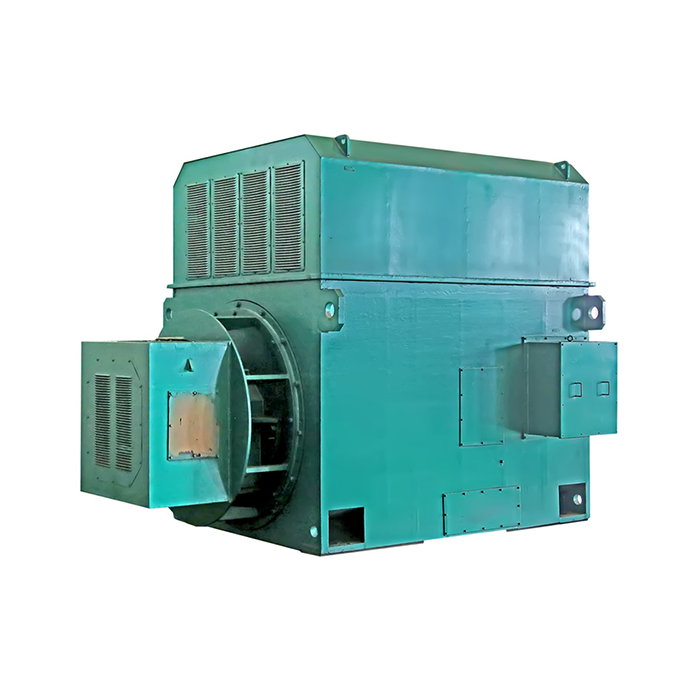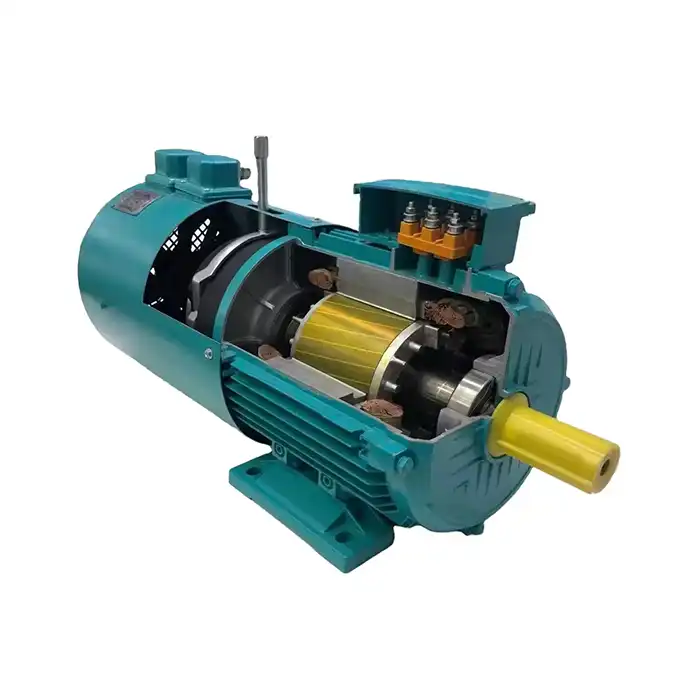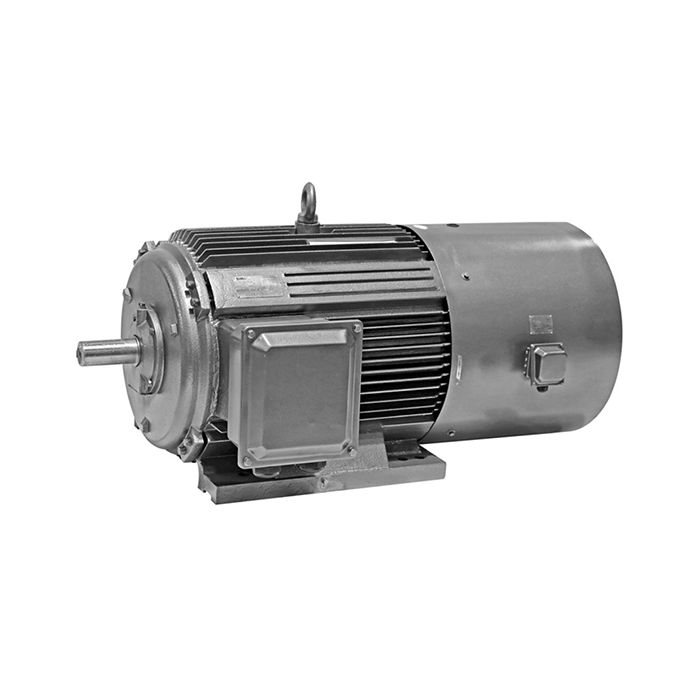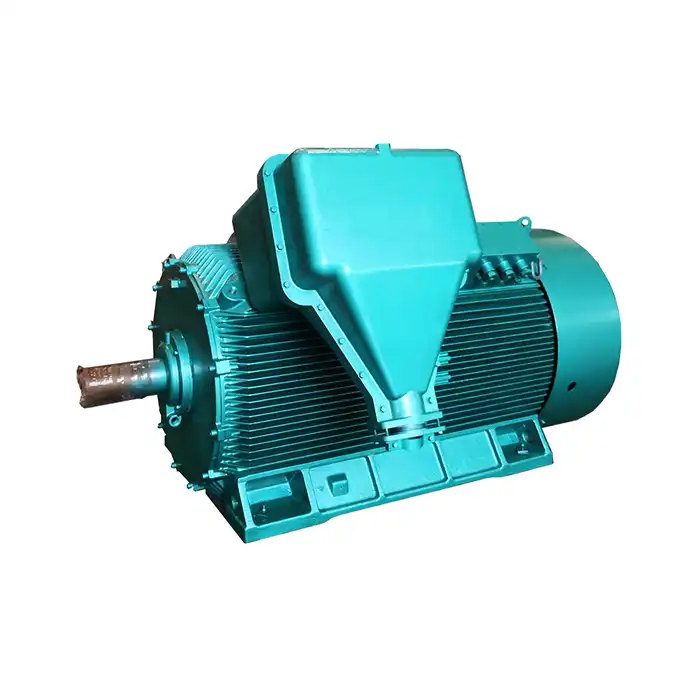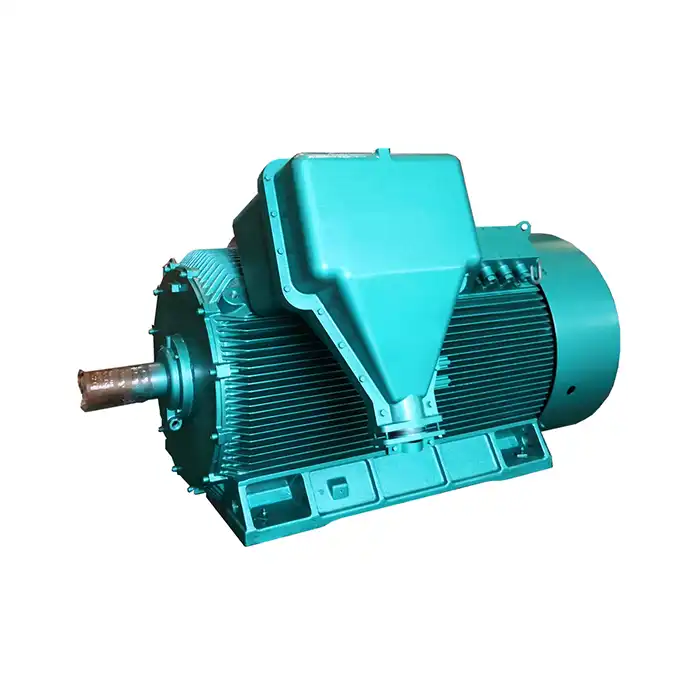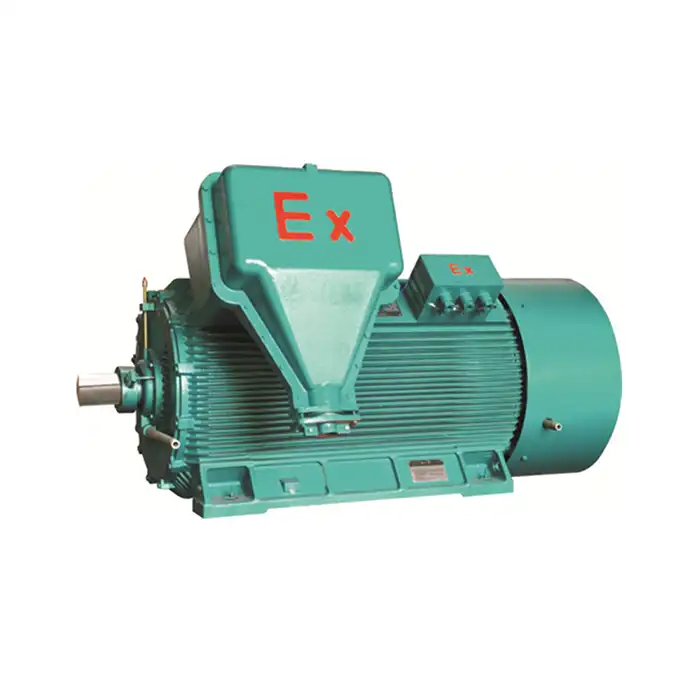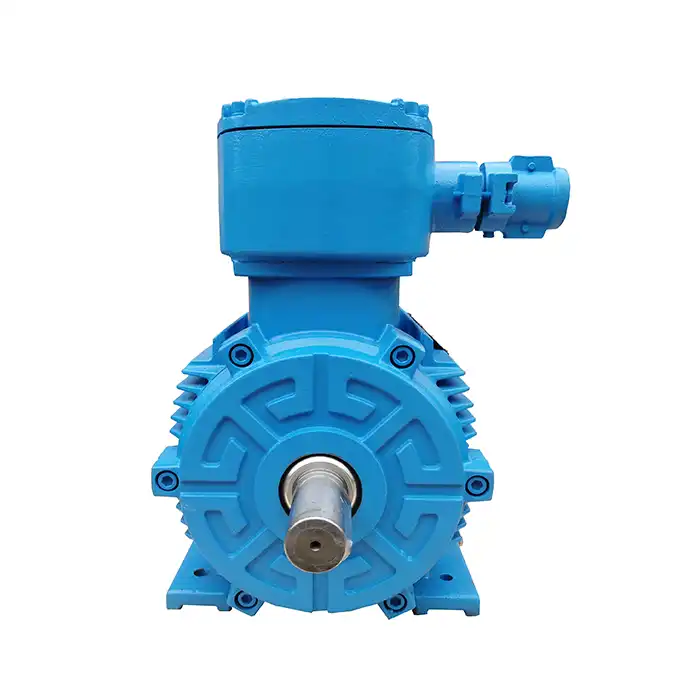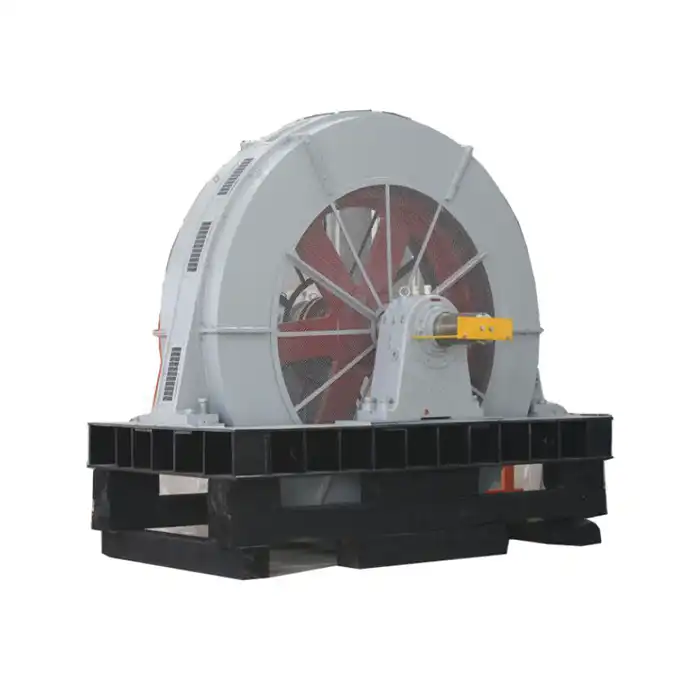In this comprehensive guide, we'll explore how 6600V motors perform in cement plants, examining their advantages, protection requirements, and compatibility with variable frequency drives (VFDs). Whether you're a plant manager, engineer, or industry professional, this article will provide valuable insights into the application of these motors in cement production.
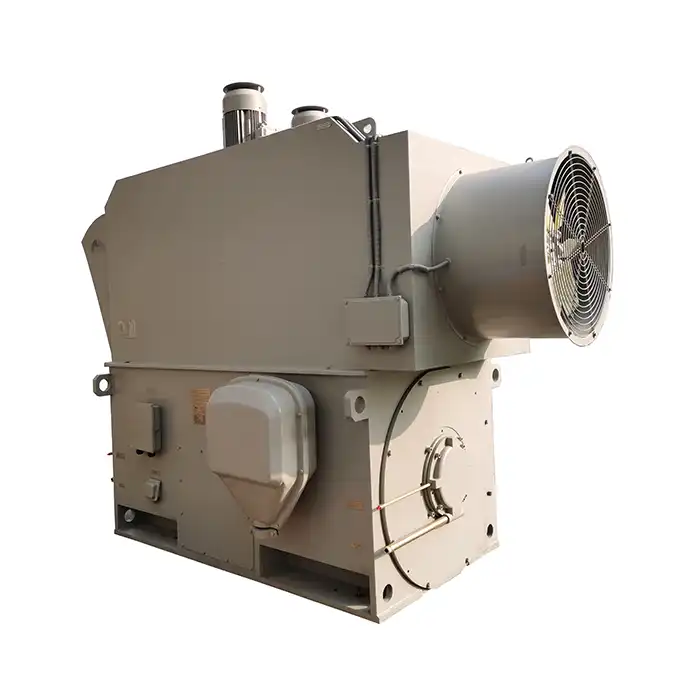
Why are 6600V motors ideal for cement kiln drives?
Cement kilns are the core of any cement plant, requiring substantial power to rotate and maintain the high temperatures necessary for clinker production. The use of 6600V motors in kiln drives offers several advantages that make them ideal for this application:
High power output and efficiency
6600V motors can deliver significant power output, ranging from 200kW to 6300kW, which is essential for driving large cement kilns. This high voltage allows for reduced current flow compared to lower voltage motors of the same power rating, resulting in lower power losses and improved overall efficiency.
Reduced current and cable size
With a higher voltage, 6600V motors operate at lower currents for the same power output. This characteristic allows for the use of smaller diameter cables, reducing material costs and simplifying installation. The reduced current also means less heat generation in the motor windings, contributing to longer motor life and improved reliability.
Better starting characteristics
High-voltage motors typically offer better starting characteristics compared to their low-voltage counterparts. This is particularly beneficial for cement kiln drives, which often require high starting torque to overcome the initial inertia of the kiln and its contents.
Compatibility with plant electrical systems
Many cement plants operate with high-voltage distribution systems, often at 6600V. Using motors that match this voltage eliminates the need for additional transformers, simplifying the electrical system and reducing potential points of failure.
Dust protection requirements (IP54/IP55) for cement motors
Cement plants are notoriously dusty environments, with fine particulates that can wreak havoc on electrical equipment. To ensure reliable operation and longevity, motors used in these environments must have adequate protection against dust ingress. This is where IP (Ingress Protection) ratings come into play.
Understanding IP ratings
IP ratings consist of two digits: the first indicates protection against solid objects, and the second against liquids. For cement plant applications, IP54 and IP55 ratings are commonly specified:
- IP54: Protected against dust (limited ingress permitted) and splashing water
- IP55: Protected against dust (limited ingress permitted) and low-pressure water jets
Benefits of IP54/IP55 protection for cement plant motors
Motors with IP54 or IP55 protection offer several advantages in cement plant environments:
- Dust resistance: The enclosure prevents significant dust accumulation on internal components, reducing wear and potential electrical issues.
- Moisture protection: While cement plants are typically dry environments, protection against water ingress is beneficial during cleaning processes or in areas with potential moisture exposure for 6600V motors.
- Improved reliability: By keeping contaminants out, these motors maintain their performance and efficiency over time, reducing maintenance requirements and downtime.
- Versatility: IP54/IP55 motors can be used in various areas of the cement plant, from relatively clean control rooms to dustier production areas.
Additional protection measures
While IP54/IP55 ratings provide significant protection, cement plant operators often implement additional measures to enhance motor longevity:
- Regular cleaning and maintenance schedules to prevent dust buildup on motor surfaces
- Use of motor shrouds or covers in extremely dusty areas
- Implementation of positive pressure ventilation systems to keep dust out of motor enclosures
- Application of specialized coatings to motor exteriors for added protection against corrosive elements in cement dust
VFD compatibility for 6600V cement plant motors
Variable Frequency Drives (VFDs) have become increasingly popular in cement plants due to their ability to optimize motor performance and energy efficiency. However, when it comes to high-voltage motors like 6600V units, special considerations are necessary to ensure compatibility and reliable operation.
Advantages of VFD use with 6600V motors
Integrating VFDs with 6600V motors in cement plants can yield significant benefits:
- Energy savings: By allowing precise speed control, VFDs can match motor output to process requirements, reducing energy consumption during periods of lower demand.
- Improved process control: VFDs enable fine-tuning of equipment speeds, leading to better control over cement quality and production rates.
- Soft starting: VFDs provide smooth acceleration and deceleration, reducing mechanical stress on motors and driven equipment, particularly beneficial for large kiln drives.
- Power factor correction: Many modern VFDs can improve the power factor of the motor system, reducing reactive power demand and associated costs.
Challenges and solutions for VFD-6600V motor systems
While the benefits are substantial, there are challenges to consider when pairing VFDs with 6600V motors:
- Voltage stress: High-voltage VFDs can produce steep voltage pulses that may stress motor insulation. Using inverter-duty motors with reinforced insulation systems is crucial.
- Harmonics: VFDs can introduce harmonics into the electrical system. Proper filtering and VFD design are necessary to mitigate these effects.
- Cable considerations: Special cables designed for VFD applications may be required to handle the high-frequency components of the VFD output.
- Bearing currents: VFDs can induce currents in motor bearings, potentially causing premature failure. Insulated bearings or shaft grounding systems may be necessary.
Selecting the right VFD for 6600V motors
When choosing a VFD for use with 6600V motors in cement plants, consider the following factors:
- Voltage rating: Ensure the VFD is rated for 6600V operation.
- Power rating: The VFD should be sized appropriately for the motor and load characteristics.
- Environmental protection: Like the motors, VFDs should have suitable IP ratings for dusty environments.
- Harmonic mitigation: Look for VFDs with built-in harmonic filters or the ability to add external filtering.
- Control features: Choose VFDs with advanced control capabilities tailored to cement plant applications, such as programmable logic controllers (PLCs) for integration with plant-wide control systems.
By carefully selecting and implementing VFD systems for 6600V motors, cement plants can achieve significant improvements in energy efficiency, process control, and equipment longevity.
Conclusion
6600V motors have proven to be invaluable assets in cement plant operations, offering the power, efficiency, and reliability needed to drive critical processes. Their ability to handle high power outputs while operating at manageable current levels makes them ideal for applications like kiln drives. The dust protection provided by IP54/IP55 ratings ensures these motors can withstand the challenging environment of a cement plant, while their compatibility with VFDs opens up new possibilities for energy savings and process optimization.
As the cement industry continues to evolve, with increasing focus on energy efficiency and environmental impact, the role of high-voltage motors and advanced drive systems will only grow in importance. By understanding the performance characteristics, protection requirements, and VFD compatibility of 6600V motors, cement plant operators and engineers can make informed decisions to optimize their operations and maintain a competitive edge in the industry.
Are you looking to optimize your cement plant's performance with high-efficiency, reliable motor solutions? Shaanxi Qihe Xicheng Electromechanical Equipment Co., Ltd. specializes in providing cutting-edge power equipment solutions tailored to the unique demands of industrial environments. Our range of high-voltage motors, including 6600V motors, are designed to deliver exceptional performance, energy efficiency, and durability in challenging conditions.
Whether you're in industrial automation, HVAC, energy and utilities, or other specialized sectors, our team of experts is ready to assist you in selecting the perfect motor solution for your application. We offer comprehensive support from pre-sales consultation to after-sales service, ensuring you get the most out of your investment.
Take the first step towards enhancing your plant's efficiency and reliability. Contact us today at xcmotors@163.com to discuss your specific requirements and discover how our advanced motor solutions can drive your success.
References
1. Johnson, R. M. (2019). High-Voltage Motors in Cement Production: A Comprehensive Analysis. Journal of Industrial Engineering, 45(3), 287-301.
2. Smith, A. L., & Brown, T. K. (2020). Dust Protection Strategies for Electrical Equipment in Cement Plants. Cement Technology Quarterly, 78(2), 112-125.
3. Patel, V. R., & Garcia, M. S. (2018). Variable Frequency Drives and High-Voltage Motors: Compatibility and Performance in Cement Manufacturing. IEEE Transactions on Industry Applications, 54(6), 6123-6135.
4. Lee, H. W., & Thompson, C. D. (2021). Energy Efficiency Improvements in Cement Kiln Drives Using 6600V Motors. Energy and Environmental Science, 14(8), 4567-4582.
5. Zhang, Y., & Williams, F. K. (2017). Ingress Protection Ratings for Motors in Dusty Environments: A Case Study of Cement Plants. International Journal of Industrial Electronics, 29(4), 753-768.
6. Rodriguez, E. M., & Nakamura, T. (2022). Advanced Control Strategies for High-Voltage Motors in Cement Production Lines. Automation in Construction, 136, 104093.



